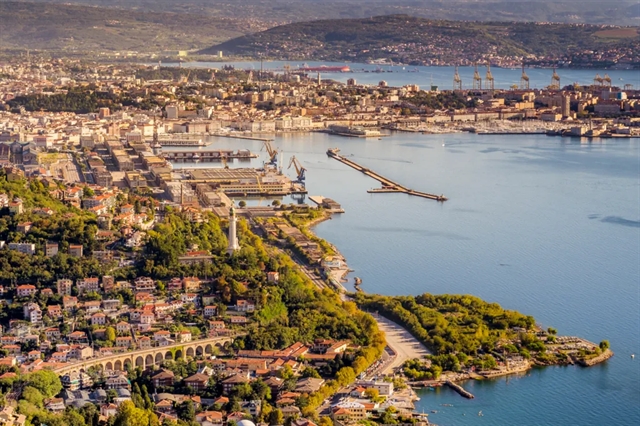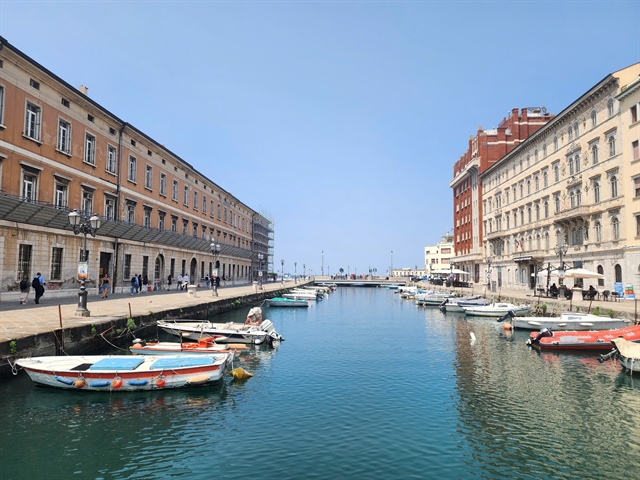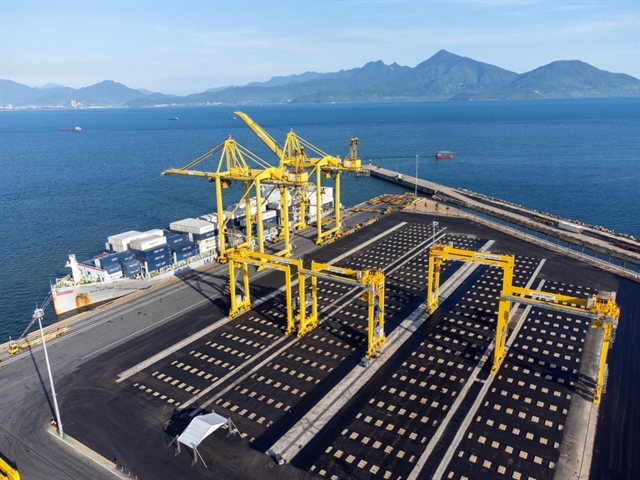 World
World

 |
| A bird view of the Municipality of Trieste in Italy. Siemens' Gridscale X helps ensuring a stable and reliable grid while accelerating the Trieste's electrification and decarbonisation programme. — Photo courtesy of Siemens |
Ngọc Bích
In the coastal city of Trieste and the dense metropolis of Milan, a quiet revolution is underway – one that’s transforming the way electricity is generated, distributed, and consumed.
Behind this transformation is a strategic partnership between Siemens and two of Italy’s most progressive utilities: AcegasApsAmga in Trieste and Unareti in Milan. Together, they are reshaping the future of energy with smart grid technologies that are sustainable, flexible, and built for the challenges of the world which are defined by decarbonisation and electrification.
These utilities are deploying advanced technologies that not only stabilise the grid but also enable dynamic, data-driven energy systems. Their success stories illuminate how digital tools, intelligent infrastructure, and flexible energy models can build resilient urban environments while still meet soaring electricity demand.
From legacy grids to living systems
Trieste is transforming its historic port into a modern, electric logistics hub, with cruise ships, electric buses, and shore-to-ship power stations all demanding huge new loads. However, the city’s electrical network is a patchwork of legacy voltage levels, some dating back more than a century.
The question is how to meet the increasing demand due to electrification of the port, electric bus charging stations and rise of "all-electric" residential buildings, without tearing up the city. The answer came from a mix of legacy and innovation. Trieste’s inherited multi-voltage grid, once seen as a liability, became an asset.
“This historical complexity gives us surprising flexibility,” said Paolo Manià, Head of Operations at AcegasApsAmga. “It allows us to support massive new loads – like electrifying the entire port – without waiting for new infrastructure from the national grid.”
AcegasApsAmga is leveraging this unique setup through advanced real-time monitoring and forecasting systems, supported by Gridscale X, Siemens’ modular grid software platform. The goal is to manage voltage and load dynamically – even at the lowest levels of the grid – where households are increasingly both consuming and generating electricity.
Smart meters now cover over 90 per cent of AcegasApsAmga’s customer base, reporting data every 15 minutes. That data flows into a central remote control room, where grid operators can monitor not just substations, but also the flow of power to and from individual homes – some of which are now feeding solar power back into the grid.
Using the system, operators can now predict grid strain 24 hours in advance, monitor every node down to the household level, and deploy flexibility services – asking select buildings or electric bus depots to shift consumption for a few hours to ease pressure on the network. This approach turns formerly passive users into active grid participants.
“It’s like turning your home or building into a mini power plant,” explained Maurizio Bigoloni, Head of Solutions for Siemens Grid Software in Italy. “The system works like a co-pilot – supporting the operator with recommendations while allowing for human oversight.”
This level of granularity turns the grid into a living, breathing organism – one that adapts dynamically to supply and demand, weather, and consumer behavior.
 |
| AcegasApsAmga uses Gridscale X to gain critical visibility over the grid. — Photo courtesy of Siemens |
The pressure beneath the pavement
In Milan, the challenges are different but no less complex. Urban grids were never built for a world of electric vehicles, rooftop solar, heat pumps, and high-density living. Meanwhile, peak power demand is expected to rise by over 70 per cent by 2050, said Luca Cavalleto, Head of the Asset Management Department of the Smart Infrastructures Business Unit, a2a Group. In addition, space is at a premium, especially in heritage-rich areas where building new infrastructure is both physically and politically complex.
To meet demand without disruption, Unareti needed to think differently. Partnering with Siemens, the utility installed compact, SF6-free gas-insulated switchgear in the heart of the city – right beneath the streets. This innovative equipment not only fits tight urban spaces but also eliminates a potent greenhouse gas, SF6 (sulfur hexafluoride), whose global warming potential is 24,300 times greater than CO2, Cavalleto said.
SF6 will be banned in the EU starting 2026 for certain voltages, he added.
The gradual prohibition of SF6 in medium-voltage switchgear will start on January 1, 2026, affecting systems for rated voltages up to 24 kV, and extending to systems for rated voltages up to and including 52 kV from January 1, 2030.
The Milan project marks Italy’s first real-world use of this climate-safe “Blue GIS” technology, setting a new standard for green electrification in city centres, said Marco Rastelli, Head of Electrification & Automation Smart Infrastructure, Siemens Italy.
Siemens was the first to offer a compliant, high-performance alternative based on natural clean air insulation, years ahead of the 2026 ban, Marco said.
Marco stressed that Siemens and Unerati have jointly built the large substation partly underground in Milan’s city centre in just 1-2 years, overcoming space and time constraints. This low-footprint, high-safety infrastructure supports the city’s growing electric mobility, heat pump adoption, and renewable energy integration – all while preserving its architectural heritage.
 |
| Unerati's electric engineer introduces the substation installation with Siemens solutions in Milan. — Photo Ngọc Bích |
Smart solutions, sustainable cities
What makes these projects in Milan and Trieste particularly compelling is not just the technology – it’s the vision behind it. Both utilities are tackling complex energy challenges while delivering tangible benefits to people and the planet.
In Milan, Unareti is powering electric transport, reducing air pollution, and future-proofing the city against regulatory change – all while preserving the historic streetscape.
In Trieste, AcegasApsAmga is managing one of Italy’s most intricate grid systems with digital clarity, enabling growth without adding emissions. It balances financial goals with community and sustainability outcomes.
Whether it's real-time voltage optimisation in Trieste or SF6-free substations in Milan, these projects share one common thread: digitalisation. Siemens’ platforms such as Gridscale X are not only replacing manual processes – they’re building the foundation for autonomous grid management.
Through these efforts, Trieste and Milan are not just modernising their grids – they are redefining what a smart city looks like, using every sensor, software line, and switch to power a greener, smarter, and more inclusive energy future.
 |
| The charming atmosphere of Passaggio Joyce in Trieste. — Photo Ngọc Bích |
At the heart of these transformations is a shift in mindset: from static infrastructure to interactive ecosystems. Cities are no longer places where energy flows in one direction – from central plants to passive users. Flexibility – the ability to shift, reduce, or produce power on demand – is fast becoming a cornerstone of resilient urban grids.
"As the power grid increases in complexity, we need to embrace digitalisation to optimise its performance and resilience,” said Sabine Erlinghagen, CEO of Siemens Grid Software.
A Blueprint for Europe’s Energy Transition
As Europe pursues bold climate goals and an ambitious green transition, the lessons from Milan and Trieste are invaluable. They show that it is possible to modernise urban infrastructure, enhance reliability, and reduce environmental impact – all while involving communities in the process.
With visionary leadership, cutting-edge technology, and a willingness to embrace change, cities can go beyond just surviving the energy transition – they can lead it. — VNS




